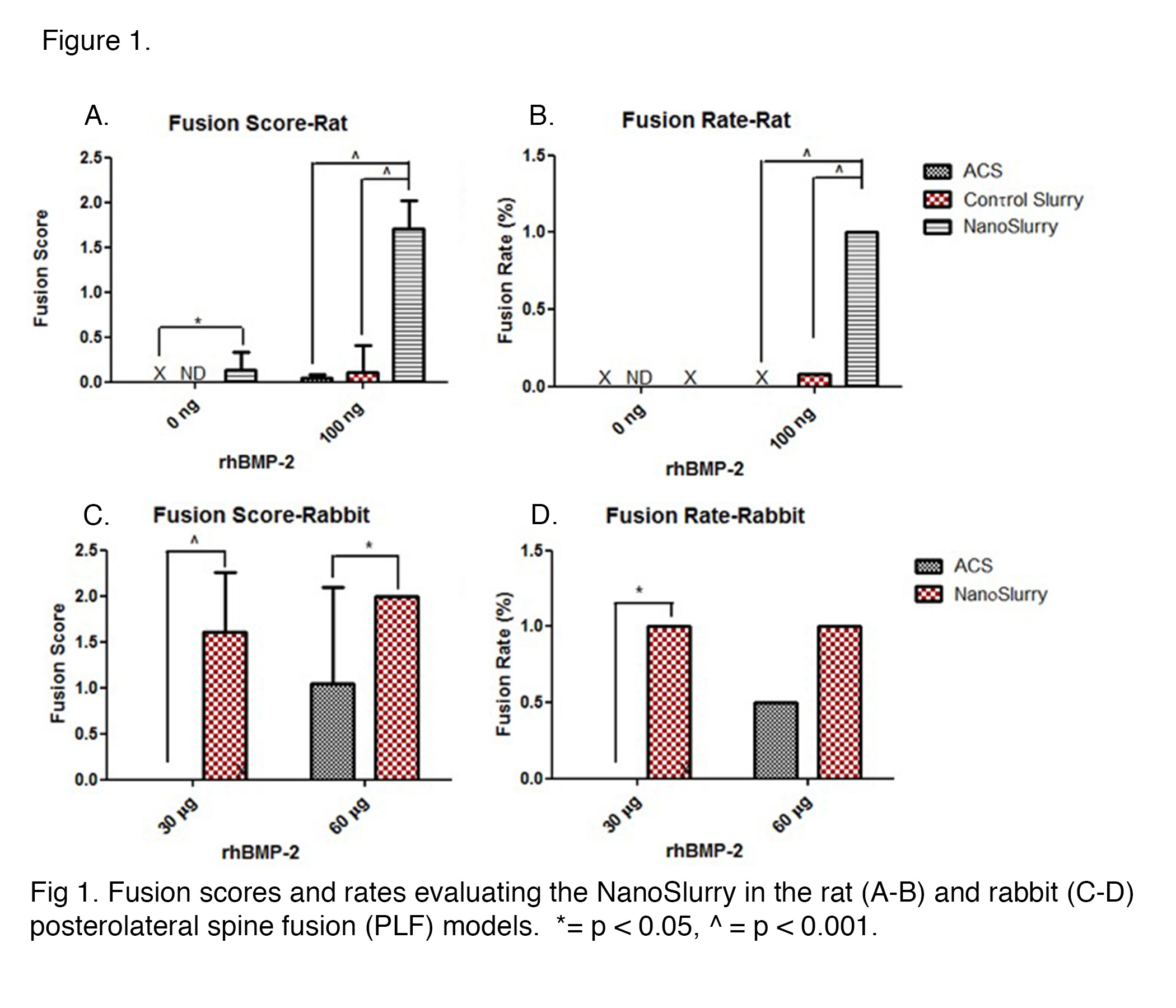Presenting Author:
Karina Katchko, B.S.
Principal Investigator:
Erin Hsu, Ph.D.
Department:
Orthopaedic Surgery
Keywords:
spinal fusion, rh-BMP2, peptide amphiphile, bone graft substitute, nanoslurry
Location:
Third Floor, Feinberg Pavilion, Northwestern Memorial Hospital
B125 - Basic Science
Peptide Amphiphile NanoSlurry: an Improved BMP-2 Carrier for Spinal Arthrodesis
Advances in bone graft substitutes have improved spine fusion rates; however, there still exists a need for a product that elicits high fusion rates with minimal adverse effects. Recombinant human bone morphogenetic protein-2 (rhBMP-2) applied onto an absorbable collagen sponge (ACS) promotes fusion rates of >90% in humans. However, the supraphysiologic dose required when rhBMP-2 is utilized with this carrier can lead to serious complications. Nanofiber scaffolds composed of peptide amphiphiles (PA), can localize both exogenous and endogenous BMP-2, thereby reducing the requisite dose of exogenous growth factor. However, a need still exists to optimize both handling properties and efficacy. Proof of principle work was performed on female Sprague-Dawley rats that underwent L4-L5 fusion and then the more stringent New Zealand white rabbit L5-L6 fusion model. For the rat studies, animals received either a peptide amphiphile nanogel—collagen slurry (NanoSlurry), control collagen slurry, or ACS alone pre-loaded with 100 ng rhBMP-2 (per animal; 50 ng/scaffold), which is a dose that does not promote fusion when applied on ACS. For the more stringent rabbit PLF model, animals received either the NanoSlurry or ACS pre-loaded with either 30 or 60 μg rhBMP-2 per rabbit. All animal procedures were approved by the Northwestern University IACUC. Bone regeneration and spine fusion were assessed in both rats and rabbits using radiographs, fusion scoring, and microCT imaging. Fusion scores were determined by blinded manual palpation using an established scoring system: 0 = no bridging bone, 1 = unilateral bridging, and 2 = bilateral bridging. Spines with an average score ≥ 1 were considered successfully fused. NanoSlurry pre-loaded with 100 ng rhBMP-2 elicited a significantly higher mean fusion score relative to equivalently pre-loaded ACS (p<0.001) or control slurry (p<0.001) in the rat PLF model. Successful fusion was seen in 100% of rats treated with NanoSlurry + 100 ng rhBMP-2. Similarly, fusion rates in rabbits treated with the NanoSlurry were significantly higher than equivalently pre-loaded ACS (100% vs 50% respectively for the 60 μg groups (p<0.05); 100% vs 0% for the 30 μg groups (p<0.05). Previous work has established 10 μg rhBMP-2 (per animal) applied on ACS results in successful fusion at a rate of 100% in the rat PLF model. Our data suggest that in this model, the NanoSlurry can effectively reduce the requirement for rhBMP-2 by a factor of 100 relative to ACS. This success also translated to the more stringent rabbit PLF model, suggesting that this technology may be robust enough for success in the clinical setting. A slurry composed of peptide amphiphile nanofibers and collagen particles was formed into a malleable paste that could be used to fill bone defects and potentially reduce the exogenous growth-factor necessary to achieve spine arthrodesis.

